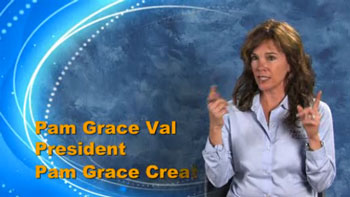 Online video marketing is a complex process involving far more than the actual production of the promotional video. Not only must you plan, produce, and polish your video, you need solid Internet video marketing strategies to ensure that your message is seen, heard, and ready to deliver results. Put the following two strategies to work and make sure your promotional video finds its audience.
Online video marketing is a complex process involving far more than the actual production of the promotional video. Not only must you plan, produce, and polish your video, you need solid Internet video marketing strategies to ensure that your message is seen, heard, and ready to deliver results. Put the following two strategies to work and make sure your promotional video finds its audience.
Online Video Marketing Strategy #1 – Optimize
One of the reasons that Internet video marketing has become increasingly popular is because an optimized promotional video can rank well on Google for competitive keywords. While a page loaded with informative content may struggle to rank well due to extreme competition, a page featuring a promotional video could appear on the first page of Google in the video listings section because there’s less competition.
However, this doesn’t happen by accident. On-page online video marketing requires that you “optimize” certain elements so that Google can understand that your promotional video is relevant for a given keyword phrase. Just as you use keywords and alt tags in traditional Internet marketing pages, you need to do the same with Internet video marketing pages. Optimizations steps include:
- Giving your promotional video file a descriptive filename containing your keyword phrase
- Giving your video a keyword-rich title
- Using alt text to describe the promotional video, again using your keyword phrase
- Including supporting text on the page, optimized with the same keyword phrase
Online Video Marketing Strategy #2 – Socialize
Social media has changed the way many people use the Internet, and successful Internet video marketing campaigns address this. In the past, searchers came to your website after conducting a search, following a link, or entering your URL; Today’s users are spending more time on Facebook and other social media sites interacting with a stream of content that they’ve previously subscribed to. Your promotional video has the potential to be pushed to users – if you get social with your online video marketing efforts.
With a subtle push, your Internet video marketing campaign could get in front of a much larger audience than if you simply posted your promotional video on your site and waited for users to find you.
How does social online video marketing work? It starts by encouraging sharing. Even if you don’t have a Facebook account, an important Internet video marketing step to take involves putting a “like” button alongside your promotional video. Below are several easy steps that encourage sharing:
- Include a “Like” button next to your promotional video. Facebook has a special “developers” section where you can grab the code to generate this button.
- Include other social sharing buttons – Numerous plugins are available that automatically place a variety of social bookmarking buttons below your posts.
- Make sure that your video has an embed code so users can embed it on their own sites and blogs.
While including sharing buttons and embed codes is good, your Internet video marketing should go further. For example, did you know that if a Facebook user likes, shares, or comments on a video, that original Facebook user’s friends can see the conversation? If a Facebook user watches your promotional video and makes a comment about it via Facebook, then that user’s friends will see the comment and may be inspired to watch the video. By encouraging comments, your online video marketing campaign can reach vast networks and sub-networks of viewers.
Optimize and socialize and your next online video marketing campaign is sure to find its audience! What do you think? Which online video marketing strategies work well for you? Share your thoughts in the comment section below.

















